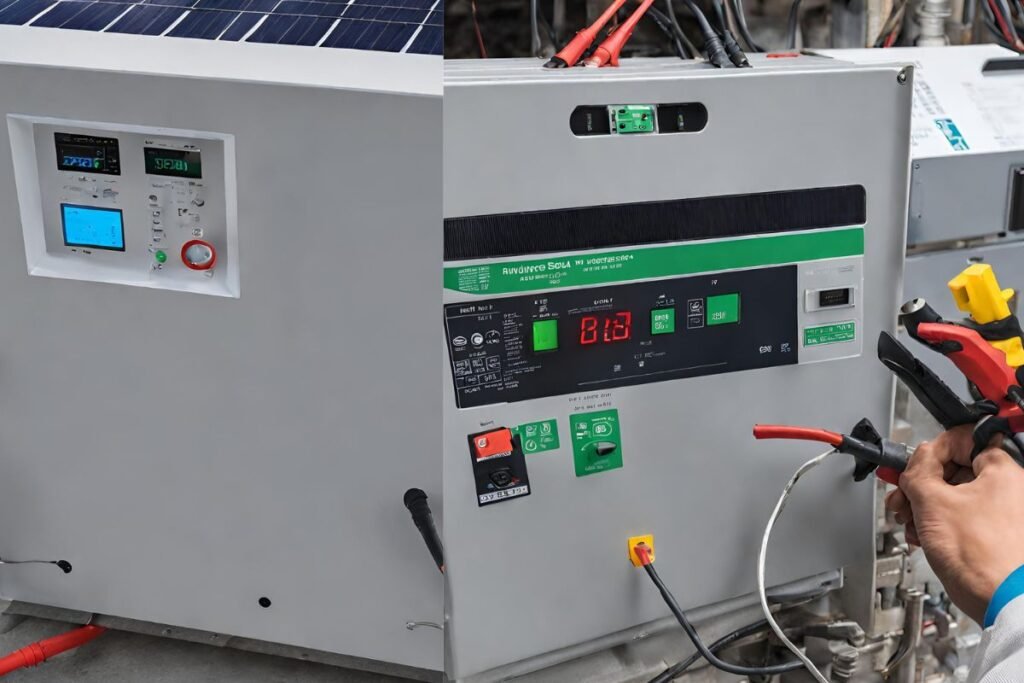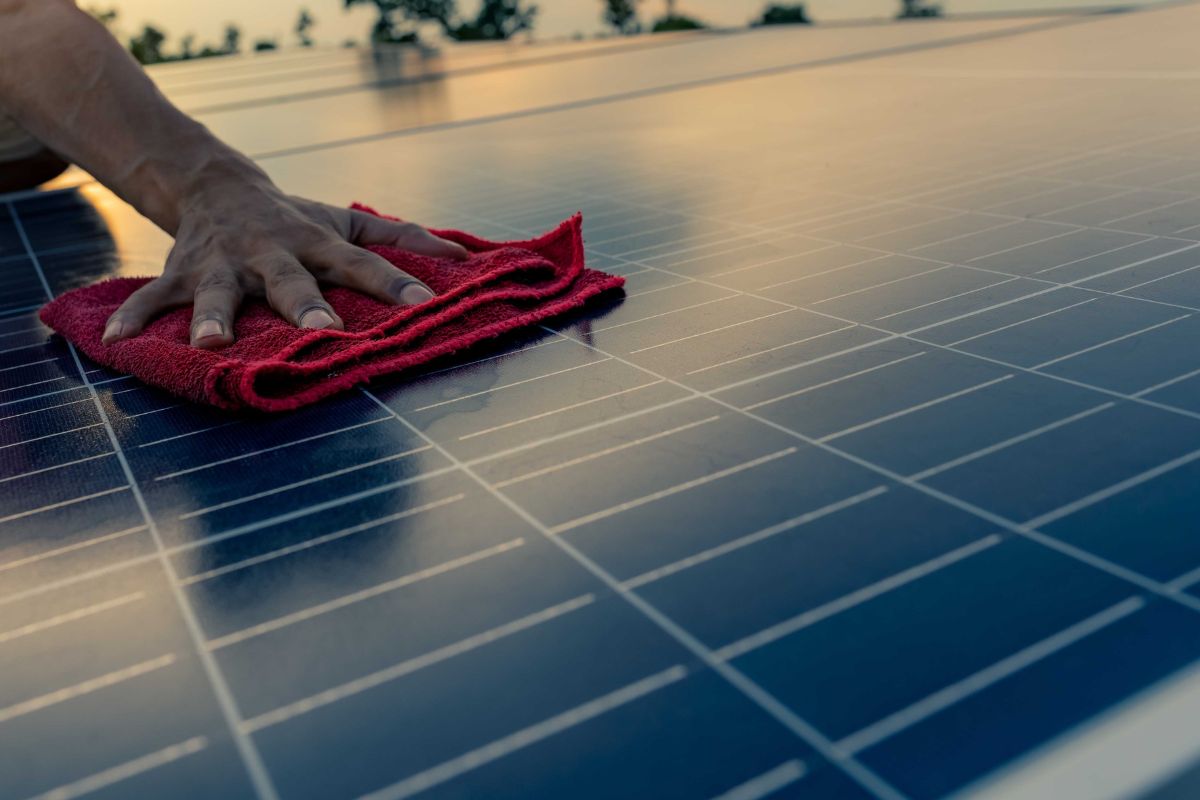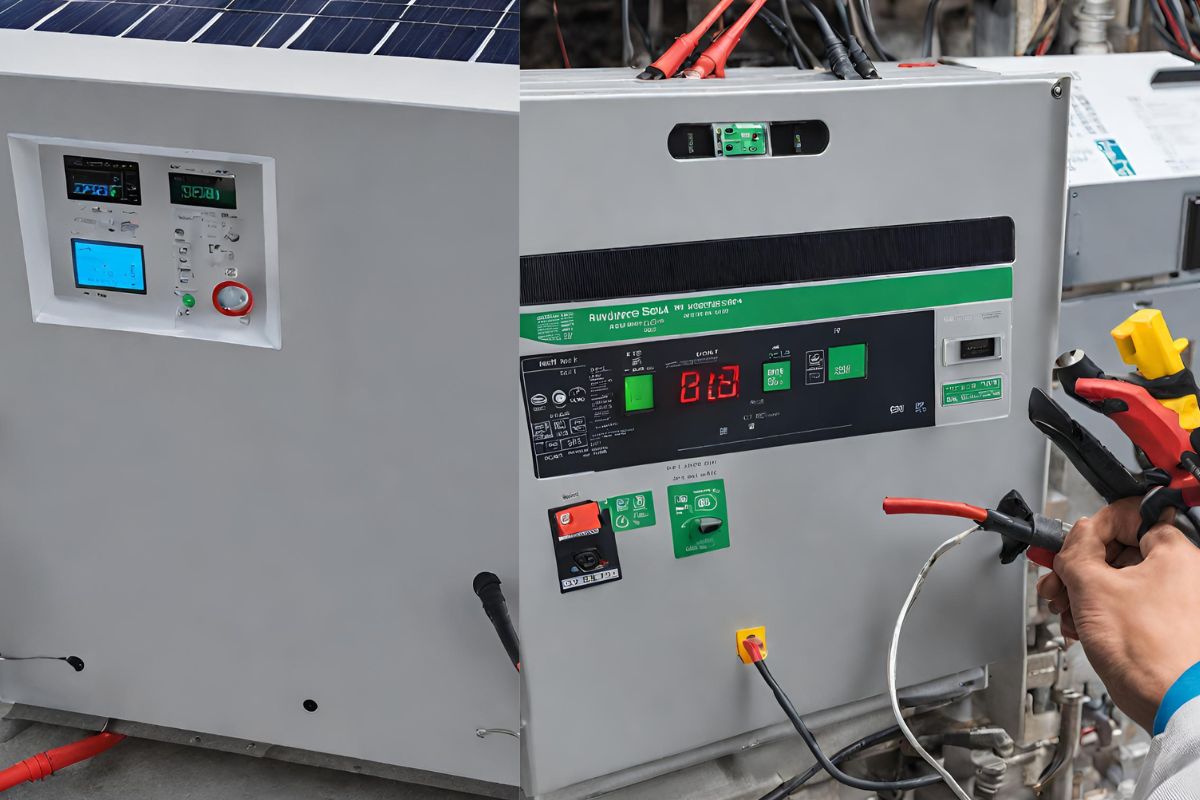Today, we are discussing more about solar inverter maintenance. Straight to it, regular solar inverter maintenance involves inspecting, cleaning the unit, and ensuring proper ventilation.
However, there is a lot more to that when it comes to maintaining solar inverters. The performance of your solar inverter is essential if you want to enjoy the solar energy world as a whole.
I will lead you through step-by-step secret methods to maintain your solar inverter from the wiring and routine, ensuring your solar power system operates efficiently.
Let’s dive in now
You can also read about what maintenance solar panels require to function properly here.
What Is The Maintenance Of Solar Inverters?
First, remember that the solar inverter is vital to a solar installation that converts direct current output into alternating current.
Maintaining your solar inverter is quite easy; it’s a small routine task to perform once a year. Dust can infiltrate your inverter and cause malfunctions. That is why the inlets must be cleaned so that the device cools properly.
Regularly check whether the wiring of each part of the inverter is secure and whether there is any slack.
Carefully inspect the fans, power modules, input and output terminals, and grounding. The indicator lights and various displays should also be checked at this time.
The inspection must strictly adhere to the procedures specified in the inverter maintenance manual.
Operators must undergo training to ensure they can identify and eliminate the causes of general failures, such as qualified replacement of fuses, components, damaged boards, etc. Untrained personnel should not work on the equipment.
A small cloth is sufficient to carry out the cleaning task.
Lack of solar inverter maintenance limits the decrease in device productivity at the end of its useful life. It should be noted that a solar inverter,
It will also interest you to note that a solar inverter has an estimated useful life of about 15 years.
You can also read how to completely set up mppt solar charge controller DIY.
What Are The Steps In The Maintenance Of An Inverter?
If you want to carry out simple inverter maintenance, it will just be on the dust-blowing, repairing of the fan, and other little stuff. However, for proper care, you must follow some steps and precautions to carry it out effectively.
Solar panels are nothing without an inverter. You can easily check the operation of your solar panels using this inverter.
Here are some simple tips for solar energy inverter maintenance:
Before beginning maintenance work, please wait 5 minutes until the internal components are discharged.
Any faults that affect the safety performance of the inverter must be called for your attention immediately before the inverter can be put back into operation.
The operator must be specially trained to identify and resolve general malfunctions, such as professionally replacing fuses, components, and damaged circuit boards.
Untrained personnel are not authorized to operate or use equipment at their posts.
Do regularly check whether the wiring of each part of the inverter is secure and free from loosening. Pay special attention to the fan, power module, input terminal, output terminal, and ground.
If an alarm is triggered, don’t restart the inverter immediately.
In the event of a serious accident that cannot be easily resolved or if the cause is unclear, prepare a detailed accident report and promptly notify the inverter manufacturer.
Note: You also have to pay attention to the hot surface of the inverter, such as the radiator of power semiconductors, which may remain hot for some time after the inverter is turned off. Also, ensure that the ventilation grilles are not obstructed.
Manual maintenance of solar inverter
Although you do not need to check your inverter daily, you should do it frequently to verify everything is in functioning order.
This includes inspecting the inverter screen for fault notices or a light different than usual. If something doesn’t seem right, consult with a specialist.
Maintain a comfortable temperature for the inverter.
When converting DC to AC, it is typical for your inverter to become heated. Allow at least four inches of empty space around your inverter for best ventilation.
If it has one, check to see if anything is obstructing or sucking in your inverter’s fan. If your fan stops working, the inverter can overheat and lose efficiency.
Finally, ensure nothing is flammable near your inverter, as it could catch fire if it becomes too hot.
Maintain the cleanliness of the air inlet filter.
Depending on your inverter’s position, the air inlet filter can grow dusty and it can make it not cool as effectively, also lowering the inverter’s effectiveness.
If the filter becomes dirty, we recommend cleaning it professionally rather than cleaning it yourself because you may need to unscrew sections of the equipment.
Make use of solar monitoring technology.
To monitor the system, use any technology given by the manufacturer of your solar energy system, such as a smartphone app.
This solar specialist can keep you updated on your solar panels and inverter status and provide you with direct access to customer service and technicians if necessary.
However, remember that any technology might have issues occasionally, so it is still a good idea to check the inverter for any issues regularly.
What Are The Common Inverter Problems?
Problems in inverters can lead to disturb the function of the inverter. Solar systems, such as panels, are usually maintenance-free and easy to fix if the problem is on the outside.
Let us quickly identify some of these common inverter problems as below:
Wrongly installed solar inverters problem
An obvious but common problem with inverters is incorrect installation of the inverters. The solar inverters are designed to last years of trouble-free use; they are built to withstand problems.
As a result, most internal problems with solar inverters are primarily caused by improper installation.
Start with the physical flaws in the components that make it function.
Before choosing someone to install or repair the inverter, Ensure the installer is a professional with the right expertise.
To be sure of the correct installation of the solar inverter, it is necessary to have the documentation provided by the inverter manufacturer.
The correct installation of the solar inverter can be checked upon delivery of the solar park or during the project’s commissioning phase.
Check that everything is operating at the correct power as specified by the manufacturer.
Overheating of solar inverter problem
One of the most common problems with solar inverters is overheating, Inverters are made up of electronic parts and are, therefore, sensitive to (high) temperatures.
If the maximum operating temperature reaches its limit, it could even stop it. It must, therefore, be determined during the design whether the intended cooling techniques have sufficient capacity.
Regularly checking for ventilation is the best strategy to address the temperature problem.
Depending on the type and size, you should also ensure proper cooling technology for the inverter. Install cooling fans in the control box and create an airflow pattern for best results.
Insulation fault/Error
Another common problem is the so-called ‘isolation error.’ This error occurs due to a short circuit between different voltage parts, and the inverter will then report an ‘isolation error.’
After the short circuit, the inverter should give you an insulation warning.
A defective connection between the panel and the DC connectors causes most short circuits. Moisture or rust in the cables or contacts can cause an inverter short circuit.
If you live in a region with a lot of humidity, you may need help with insulation faults.
Furthermore, to solve the insulation problems, ensure that the DC cables come with good quality and that all connections are waterproof.
To prevent this, it is also important that the degree of protection (IP) is chosen correctly for the inverter cabinet and the inverter building.
In the event of an insulation fault, life-threatening voltages may be present on the conductive parts of the installation.
Converter restarts after a network failure
If a grid failure occurs in the solar system, the inverter must be able to resume operation independently after being brought back online.
The system trigger shutdown can occur during a voltage spike in the grid after an abrupt deactivation.
If the inverter does not start, a service team must come to the location to put the system back into operation. This will then lead to unnecessary production loss.
As a result, it is critical to consider not only the brand of the inverter alone but also the quality of the parts used and the usage of a good 24/7 monitoring system to discover issues as soon as possible.
If this is done correctly, all PV panels connected to the inverter can supply power once the issue is detected and fixed by a specialist.
These problems mainly occur in areas where the network connection is unstable.
From MPPT mode
Modern inverters use Maximum Power Point Tracking technology (MPPT) as their primary operating mode. Maximizing inverter performance in large PV systems with high current is better.
These strings are then connected to an inverter. However, not all strings produce the same amount of power due to, for example, shade, different arrangements, defects in a panel, etc.
In addition, the strings supply different voltages, and the difference between the strings varies continuously.
The MPPT mode algorithm is designed so that the inverter always uses the most optimal supply voltage despite these differences in strings.
It is, therefore, important that the operation of the MPPT mode is determined and that it is determined whether the MPPT mode is functioning properly.
This can be done by conducting several performance tests during the commissioning of the solar park.
Determining the operation of the MPPT mode is also necessary to later compare the actual and guaranteed yields according to the manufacturer.
Defects in inverters vary from very easy to resolve to very complicated defects. However, whether the defect is simple or complicated, both will hurt production.
The MPPT module ensures that each string gets the highest possible source voltage, no matter how different the strings are.
Do Solar Inverters Require A Lot Of Maintenance?
No, solar inverters don’t require a lot of maintenance. The operation of an inverter is based on a different set of electronic components.
However, with proper maintenance, your solar inverters can last 10 years.
Returning to the question, “Do inverters Require A Lot Of Maintenance?” I have stated that they do not. Here’s why:
Solar inverters don’t have moving parts. Inverters only have a few moving parts, reducing wear and tear chances.
Solar inverters are built to cool themselves with the fan mechanism that prevents them from overheating.
Notice: You should periodically inspect them for loose connections or debris, but this is a simple and infrequent task.
Final Thought
We have talked about the maintenance of solar inverters in this article. You should also be aware that the position of the inverter also influences its lifespan. Your inverter must be fixed vertically, never horizontally.
We should also look into temperatures for better operation and maintenance of your inverter.
Excessive temperature can affect the output capacity of the inverters, the performance of components, and even the life of the equipment.
But, low temperatures can also affect the operation of the inverters with incorrect operation. Thus, winter is a time to pay attention to inverter maintenance.
Regular checking and cleaning of your inverter limits malfunctions and saves you a lot. Here is also how to install hybrid solar inverter.



